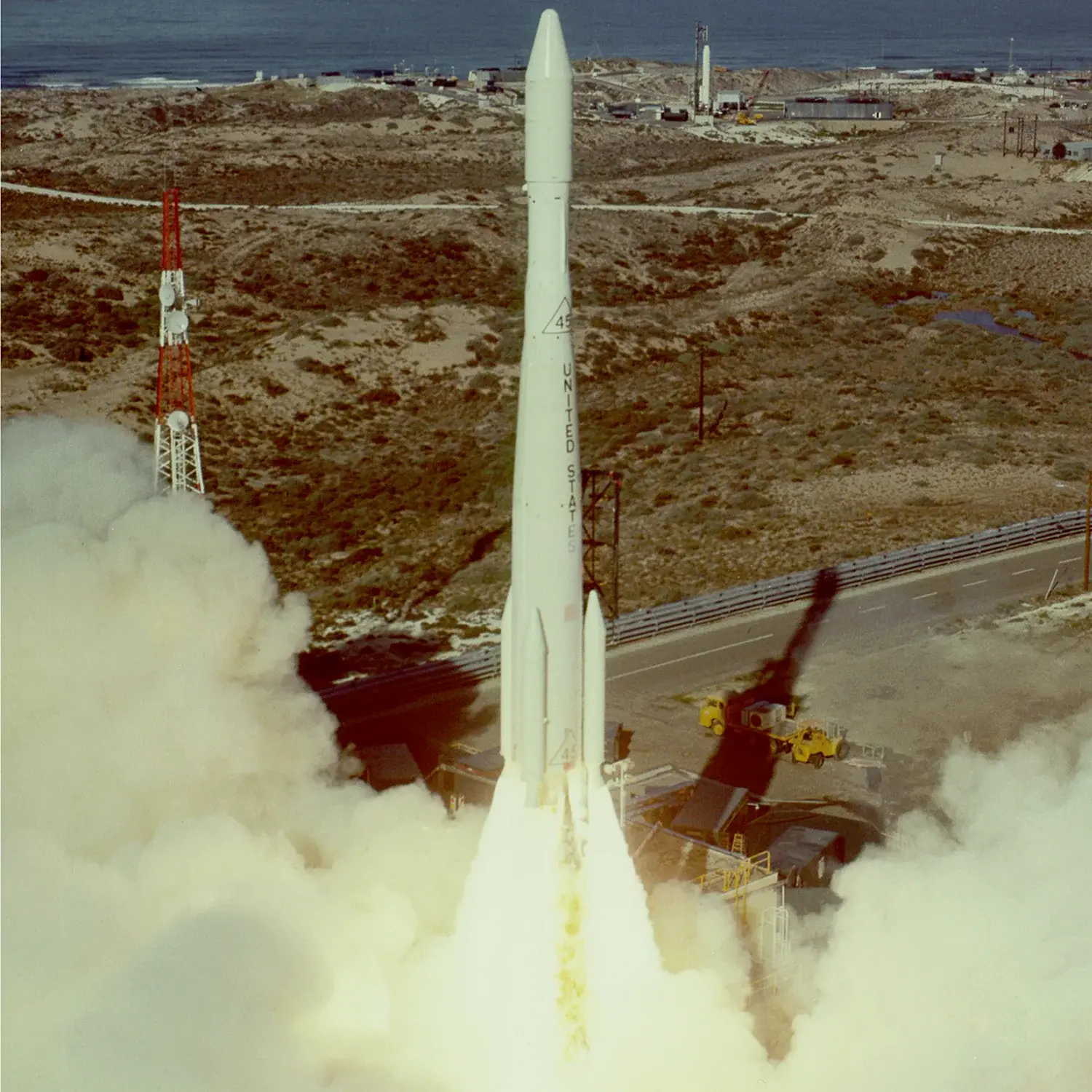Explorer 29 (GEOS 1)
Launch Success
Liftoff Time (GMT)
18:38:43
Saturday November 6, 1965
Watch Replay
24/7 Coverage
Mission Details
Launch Notes
First launch of Delta-E
Explorer 29 (GEOS 1)
The GEOS 1 (Geodetic Earth Orbiting Satellite) spacecraft was a gravity-gradient-stabilized, solar-cell powered unit designed exclusively for geodetic studies. It was the first successful active spacecraft of the National Geodetic Satellite Program. Instrumentation included four optical beacons, laser reflectors, a radio range transponder, Doppler beacons, and a range and range rate transponder. These were designed to operate simultaneously to fulfill the objectives of locating observation points (geodetic control stations) in a three dimensional earth center-of-mass coordinate system within 10 m of accuracy, of defining the structure of the earth's irregular gravitational field and refining the locations and magnitudes of the large gravity anomalies, and of comparing results of the various systems onboard the spacecraft to determine the most accurate and reliable system.
Low Earth Orbit
1 Payload
387 kilograms
Rocket

Launch Site
Stats
Delta E
1st
Mission
1st
Mission of 1965
1965
100th
Orbital launch attempt
